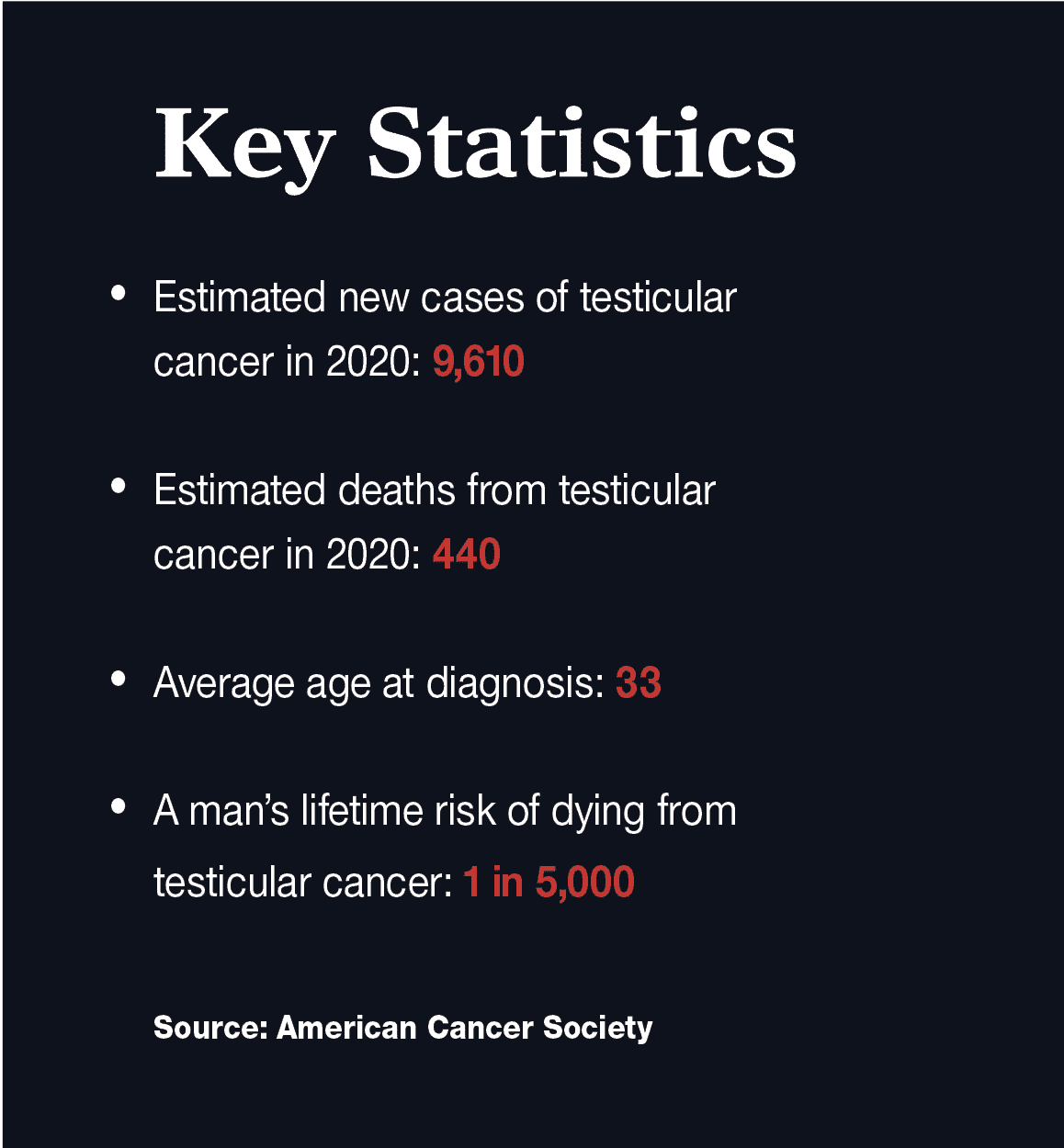Testicular cancer’s high cure rates turn panic into promise
Testicular cancer rarely makes the headlines. Because so few men are diagnosed with the disease each year — the American Cancer Society puts the number of new cases at 9,610 annually — many men don’t pay attention to it. But they should. The earlier testicular cancer is detected, the easier it is to cure.
Cancer of the testicles — the organ that produces sperm and testosterone — typically affects young men. The average age at diagnosis is 33, according the American Cancer Society. But the age range is wide: About 6% of cases are found in children and teenagers and about 8% in men over age 55.
“We do know that this is a cancer that is most common between the ages of 15 and 35, but we don’t know why,” says Britt Hanson, DO, a hematologist/oncologist at NorthShore University HealthSystem.
Some notable cases affecting young athletes have made headlines. Figure skating fans will remember Olympic medalist Scott Hamilton, who returned to the sport after being treated for testicular cancer at age 38. And cyclists may recall that Lance Armstrong was diagnosed with stage 3 testicular cancer when he was 25 years old. After Armstrong successfully underwent treatment for the disease — which had spread to his abdomen, lungs and brain — he continued to compete and have more children.
Effective treatment
Fortunately, the disease is rarely fatal. A man’s lifetime risk of dying from testicular cancer is about 1 in 5,000, according to the American Cancer Society.
“The earlier the disease is diagnosed, the easier it is to treat,” Hanson says, “and even if it travels to the brain or the lungs, it is curable.”
Treatment is effective, says Michael McGuire, MD, a urologist at Northwestern Medicine. The five-year survival rate is 99% if the cancer hasn’t spread. “It is one of the greatest success stories in the history of medicine,” he says.
This is a disease that is emotionally scary. … But the reality is that we have the opportunity of getting [people] back to doing everything they did before treatment.”
While there are many forms of testicular cancer, more than 90% of cases are germ cell cancers that start in the cells that make sperm. Treatment depends on the stage, type and size of the cancer. Diagnosing the disease early opens up more treatment avenues, McGuire says.
“Earlier detection is important,” he says, “because it allows for more opportunity for options of treatment.”
Depending on the stage, physicians may recommend active surveillance to follow the individual regularly for any further signs of cancer. Usually, surgery is needed to remove the affected testicle.
And sometimes, doctors also remove lymph nodes in the abdomen to prevent future cancer. Chemotherapy is an option for a disease that has spread, McGuire says.
“We want to give men the best treatment with the least side effects,” McGuire says. “Sometimes we do chemotherapy, stem cell transplantation or immunotherapy for advanced disease, but most men don’t need anything that aggressive.”

Emotional impact
While men who have a testicle removed may be concerned about their ability to have children, McGuire says the cancer does not affect fertility in most men. Even if one testicle is removed, another functioning one remains.
If necessary, there are ways to retain fertility. “We have the opportunity to store sperm, and we have a specialist who can get sperm from a testicle with cancer in it,” McGuire says.
Testicular cancer, however, doesn’t only have a physical effect; there’s an emotional effect, too. “This is a disease that is emotionally scary,” McGuire says. “Young men seeing their mortality is a shock, especially when it involves losing a part of their genitalia. But the reality is that we have the opportunity of getting them back to doing everything they did before treatment.”
To catch testicular cancer early, McGuire recommends that every man conduct a self-exam each month after puberty for signs of the disease. “Any hard spot in the testicles should be seen by a doctor,” he says. The problem is, he adds, even after feeling a lump, many men wait six to eight months before they see a physician.
“There’s no reason to wait, because the vast majority of the lumps and bumps that men feel in their testicles are not testicular cancer,” McGuire says. “Nothing makes me happier than to say, ‘This isn’t cancer. You have nothing to worry about.’”
But seeking medical attention early is key to a proper diagnosis. And with the good prognosis for testicular cancer, it’s possible to eliminate the fear factor.

Originally published in the Spring/Summer 2020 issue.

Nancy Maes, who studied and worked in France for 10 years, writes about health, cultural events, food and the healing power of the arts.










